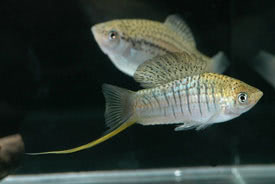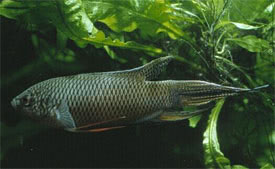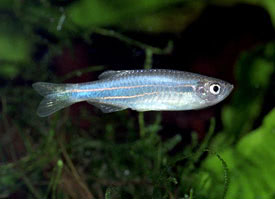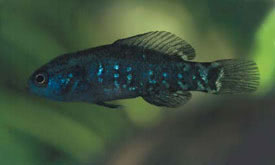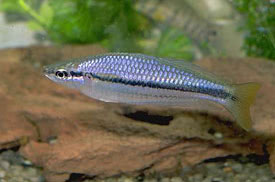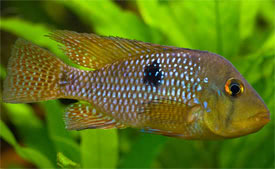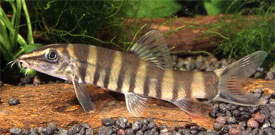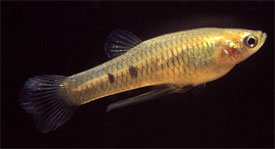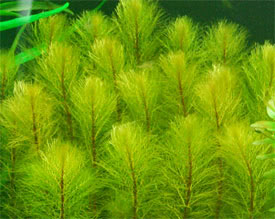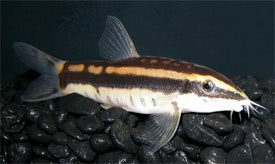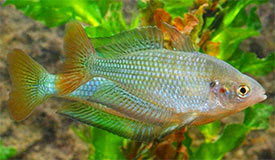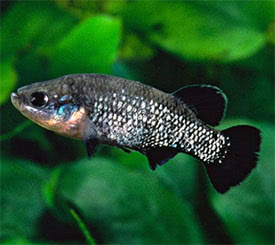
 Magyarul / Hungarian
Magyarul / Hungarian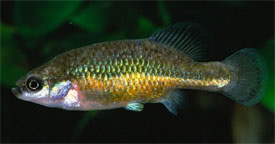
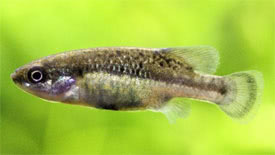
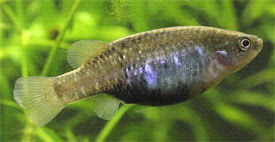
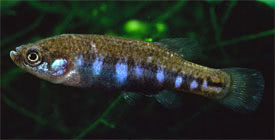
- Scientific name: Allotoca dugesii
- Synonyms: Allotoca dugesi, Allotoca vivipara, Fundulus dugesii
- Common name: Opal allotoca, Bumblebee Goodeid
- Group: Livebearers
- Habitat: Central America; Mexico
- Size: 6-6,5 cm
- Biotope: Inhabits in smaller, slow-flowing rivers and shallow ponds.
- Social behavior: Males are quite aggressive with each other. Allotoca dugesii should be kept in a species-only aquarium.
- Diet: Omnivorous; In nature the eat small invertebrates and insect larvae, but will also accept frozen and flake foods in aquarium. A vegetable portion should be included in the diet.
- Breeding: Quite easy
- Tank: Minimum 80 litres
- Population: 1 male and 2-3 females for 100 litres
- Decoration: A densely planted aquarium with rocks and roots to provide enough hiding places.
- Temperature: 18-24 °C
- pH: 7-8
- Hardness: 7-20 NK°
- Lifespan: 3-5 years
Description: In their genus, Allotoca dugesii have the widest distribution in their natural habitat, but because of their sneaking life, only a little information is known about them. Wild species of Allotoca dugesii often infected with skin-parasites, usually in the dorsal and anal fins! Bumblebee Goodeid has a compact body, a small, pointed head and its dorsal fin located close to the tail fin. The upper parts of the body are olive-green with a silvery shine and the lower body is silvery or gold. Males have a dark horizontal line with a greenish tinge, from the eye to the base of the caudal fin. This line on the females is broken. The base of the fins can have yellow or orange coloration. The females have 4 to 11 broad vertical lines on their sides with blue areas along the flanks. Some individuals can show dark black blotches on the sides. Their tank should have a capacity of at least 100 litres, otherwise the males get very aggressive.
Females are typically produce 10-30 fry every 55 - 60 days, but rarely the number of the fry can be more. Newborn fish have a body length of about 5 mm. Since the parents will eat their fry, the pregnant female should be placed to a separated tank with dense vegetation so the fry can hide among the plants.




